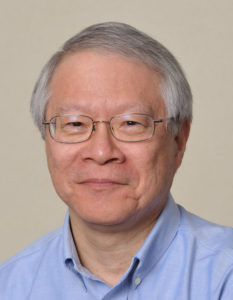Our next Penn Bioengineering seminar will be held on zoom next Thursday.

Speaker: Kenneth Yamada, M.D., Ph.D.
NIH Distinguished Investigator
Cell Biology Section
National Institute of Dental and Craniofacial Research, National Institutes of Health (NIH)
Date: Thursday, September 9, 2021
Time: 3:30-4:30 PM EDT
Zoom – check email for link or contact ksas@seas.upenn.edu
Location: Moore Room 216, 200 S. 33rd Street
Abstract: Real-time microscopy of the dynamics of cells and tissues in 3D environments is opening new windows to understanding the biophysical mechanisms of complex biological processes. Direct visualization is allowing us to explore fundamental questions in more depth that include: How do cells migrate in 3D? How do cancer cells invade? How is the extracellular matrix assembled? How are organs formed? Visualizing how cells move and organize into tissues is not only providing descriptive insights, but is also leading to the identification of novel, unexpected physical and mechanical mechanisms relevant to tissue engineering. Cells can use varying combinations of cell adhesion to adjacent cells and to the surrounding extracellular matrix with localized cellular contractility to migrate, invade, and produce the complex tissue architecture needed for organ formation.
Kenneth Yamada Bio: Kenneth Yamada has been an NIH Distinguished Investigator since 2011. He received MD and PhD degrees from Stanford. He was a Section Chief at the National Cancer Institute for 10 years and has been a Section Chief at NIDCR since 1990. He is an elected Fellow of the AAAS and American Society for Cell Biology. His research focuses on discovering novel mechanisms and regulators of cell interactions with the extracellular matrix and their roles in embryonic development and cancer. His research group focuses on the mechanisms by which three-dimensional (3D) extracellular matrix mediates key biological events, including cell migration, tissue morphogenesis, and cancer cell invasion. His research places particular emphasis on characterizing the dynamic movements of cells and their extracellular matrix as tissues are remodeled in 3D in real time. The biological systems they study include human primary cells migrating in 3D, human tumor cells and tissues, and mouse organ development. He places particularly high priority on developing future independent research leaders.
